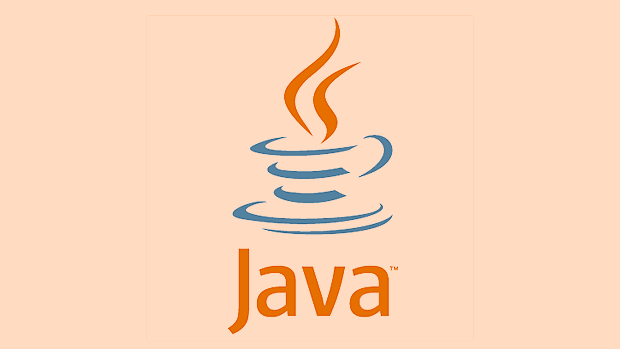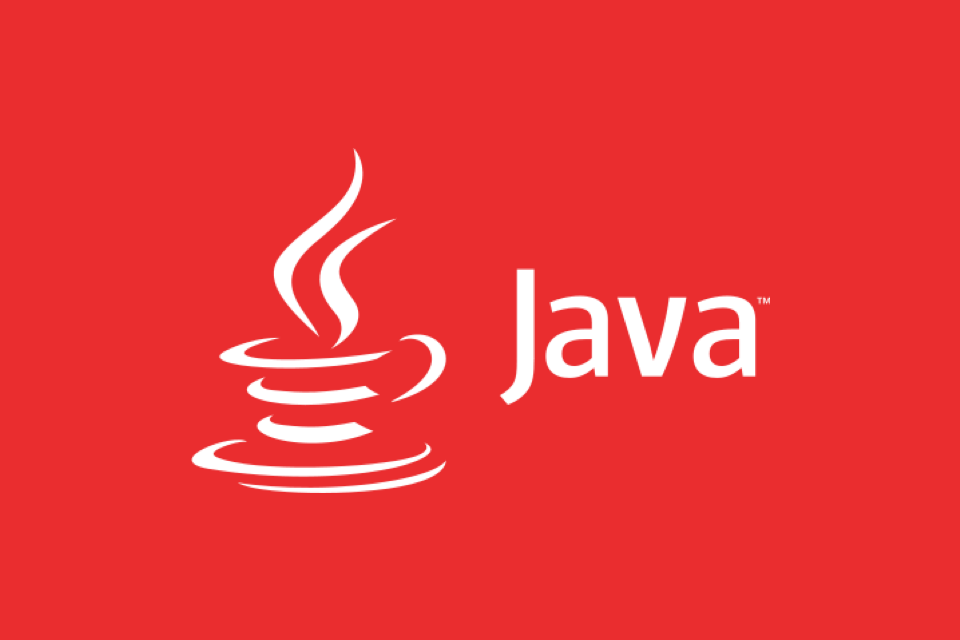Java 21 introduced the Foreign Function & Memory API to solve the complexity, poor security, and large performance overhead of JNI; 2. The core components include MemorySegment (memory abstraction), ValueLayout/MemoryLayout (memory layout), SymbolLookup (function symbol lookup), FunctionDescriptor and MethodHandle (function call definition), Arena (memory lifecycle management); 3. Pure Java code can call local functions and operate off-heap memory safely and efficiently, without writing C code or manually managing memory; 4. Compared with JNI, FFM API provides stronger type safety, automatic memory management, better performance and higher security; 5. Currently in Java The preview feature in 21 requires the enable-preview. It is not recommended for use in production environments and is expected to be officially released in subsequent versions.

Java 21 introduces the Foreign Function & Memory API (FFM API), an important new feature designed to enable Java programs to safely and efficiently call local libraries (such as dynamic link libraries written in C/C) and interact with off-heap memory. It replaces the long-standing but problematic JNI (Java Native Interface), providing a more modern, concise and safer way to handle interoperability with native code.

The core goal of this API is to enable Java to access local functions and memory naturally like calling local methods, while avoiding the complexity and security risks of JNI.
1. Why do you need the Foreign Function & Memory API?
Prior to Java 21, interacting with native code mainly relies on JNI , but it has many problems:

- Complex and complicated : it requires writing C code, generating header files, compiling shared libraries, and the development process is not smooth.
- Error-prone : Manually managing memory and type conversions can easily lead to crashes (such as segfaults).
- Performance overhead : JNI calls have high context switching costs.
- Poor security : direct operation of pointers, lack of memory access bounds checking.
The emergence of the Foreign Function & Memory API is to solve these problems and provides a pure Java way to implement external function calls and memory operations.
2. Detailed explanation of core components
The FFM API is mainly composed of the following key classes, located in java.lang.foreign package:

1. MemorySegment: Abstraction of off-heap memory
MemorySegment represents a continuous memory area, which can be in or out of heap, or even local memory. It is a secure encapsulation of raw memory.
// Allocate 100 bytes of off-heap memory try (MemorySegment segment = MemorySegment.allocateNative(100)) {
segment.set(JAVA_INT, 0, 42); // Write int at offset 0
int value = segment.get(JAVA_INT, 0); // Read System.out.println(value); // Output 42
}- Use
allocateNative()to allocate local memory. - Use
set()/get()method to cooperate withValueLayout(such asJAVA_INT) for typed read and write. - It must be used in
try-with-resourcesto ensure that memory is released in time.
2. ValueLayout and MemoryLayout: Memory layout definition
Used to describe the layout of data structures, such as basic types, structures, arrays, etc.
ValueLayout.OfInt INT = ValueLayout.JAVA_INT; SequenceLayout arrayLayout = MemoryLayout.sequenceLayout(10, INT); // int[10]
These layouts can be used to build function parameter types or structure maps.
3. SymbolLookup: Find local function symbols
Used to locate function addresses in dynamic libraries.
SymbolLookup lookup = SymbolLookup.libraryLookup("libc.so.6"); // Linux
// or SymbolLookup.libraryLookup("msvcrt.dll") on Windows4. FunctionDescriptor and MethodHandle: Define and call external functions
FunctionDescriptor describes the parameters and return types of the function, and combines Linker to get the callable MethodHandle .
Example: Calling printf of C
import java.lang.foreign.*;
import static java.lang.foreign.ValueLayout.*;
Linker linker = Linker.nativeLinker();
SymbolLookup stdlib = linker.defaultLookup();
// Define the printf function signature: int printf(const char*, ...)
FunctionDescriptor printfDesc = FunctionDescriptor.of(JAVA_INT, ADDRESS);
MethodHandle printf = linker.downcallHandle(stdlib.find("printf").orElseThrow(), printfDesc);
// Prepare string (must end with NULL)
try (Arena arena = Arena.ofConfined()) {
MemorySegment format = arena.allocateFrom("Hello from %s!\n");
MemorySegment name = arena.allocateFrom("FFM API");
// Call printf
printf.invoke(format, name);
}Output:
Hello from FFM API!
Note: The variable parameter function supports limited support. In this example, only two parameters are passed, so you need to be cautious when using it.
3. Calling a custom local library (simple example)
Suppose you have a C function:
// libadd.so (Linux) / add.dll (Windows)
int add(int a, int b) {
return ab;
}After compiling into a shared library, call it in Java:
try (Arena arena = Arena.ofConfined()) {
Linker linker = Linker.nativeLinker();
SymbolLookup lookup = linker.defaultLookup(); // or specify the path FunctionDescriptor addDesc = FunctionDescriptor.of(JAVA_INT, JAVA_INT, JAVA_INT);
MethodHandle add = linker.downcallHandle(
lookup.find("add").orElseThrow(),
addDesc
);
int result = (int) add.invoke(3, 4);
System.out.println("3 4 = " result); // Output 7
}No need to write JNI code, it is done entirely in the Java layer.
IV. Arena: Memory life cycle management
Java 21 introduces the Arena concept to unify the life cycle of MemorySegment .
-
Arena.ofConfined(): Single thread access, good performance. -
Arena.ofShared(): Multi-threaded sharing, more secure but with synchronization overhead.
try (Arena arena = Arena.ofConfined()) {
MemorySegment seg = arena.allocate(100);
// Use seg...
} // Automatically release all memoryThis is a key mechanism to prevent memory leaks.
5. Advantages compared to JNI
| characteristic | JNI | FFM API |
|---|---|---|
| Do you need native code? | yes | no |
| Memory management | Manual (prone to error) | Arena Automatic Management |
| Type safety | Weak (macro definition) | Strong (ValueLayout) |
| performance | Generally, the call overhead is high | Better, JVM can be optimized |
| Ease of use | complex | Simple, pure Java |
| Security | Low (direct pointer) | High (Border Check) |
6. Current status and precautions
- The Preview feature is still in Java 21 , and the preview option needs to be enabled:
javac --release 21 --enable-preview YourClass.java java --enable-preview YourClass
- The API may be adjusted in the future and is not recommended for use in production environments until they become permanent (Java 22 or 23 is expected).
- Support for complex structures (such as nested structures, unions) is being improved.
- Cross-platform compatibility requires attention to library names and calling conventions (such as stdcall for Windows).
Basically that's it. The Foreign Function & Memory API is an important step for Java to system-level programming, marking that Java is becoming more "close to hardware" while remaining secure and concise. It will gradually become the preferred solution for scenarios that require high-performance local calls (such as databases, AI library integrations, operating system tools).
The above is the detailed content of The Foreign Function & Memory API in Java 21. For more information, please follow other related articles on the PHP Chinese website!

Hot AI Tools

Undress AI Tool
Undress images for free

Undresser.AI Undress
AI-powered app for creating realistic nude photos

AI Clothes Remover
Online AI tool for removing clothes from photos.

Clothoff.io
AI clothes remover

Video Face Swap
Swap faces in any video effortlessly with our completely free AI face swap tool!

Hot Article

Hot Tools

Notepad++7.3.1
Easy-to-use and free code editor

SublimeText3 Chinese version
Chinese version, very easy to use

Zend Studio 13.0.1
Powerful PHP integrated development environment

Dreamweaver CS6
Visual web development tools

SublimeText3 Mac version
God-level code editing software (SublimeText3)

Hot Topics
 A Developer's Guide to Maven for Java Project Management
Jul 30, 2025 am 02:41 AM
A Developer's Guide to Maven for Java Project Management
Jul 30, 2025 am 02:41 AM
Maven is a standard tool for Java project management and construction. The answer lies in the fact that it uses pom.xml to standardize project structure, dependency management, construction lifecycle automation and plug-in extensions; 1. Use pom.xml to define groupId, artifactId, version and dependencies; 2. Master core commands such as mvnclean, compile, test, package, install and deploy; 3. Use dependencyManagement and exclusions to manage dependency versions and conflicts; 4. Organize large applications through multi-module project structure and are managed uniformly by the parent POM; 5.
 Building RESTful APIs in Java with Jakarta EE
Jul 30, 2025 am 03:05 AM
Building RESTful APIs in Java with Jakarta EE
Jul 30, 2025 am 03:05 AM
SetupaMaven/GradleprojectwithJAX-RSdependencieslikeJersey;2.CreateaRESTresourceusingannotationssuchas@Pathand@GET;3.ConfiguretheapplicationviaApplicationsubclassorweb.xml;4.AddJacksonforJSONbindingbyincludingjersey-media-json-jackson;5.DeploytoaJakar
 Developing a Blockchain Application in Java
Jul 30, 2025 am 12:43 AM
Developing a Blockchain Application in Java
Jul 30, 2025 am 12:43 AM
Understand the core components of blockchain, including blocks, hashs, chain structures, consensus mechanisms and immutability; 2. Create a Block class that contains data, timestamps, previous hash and Nonce, and implement SHA-256 hash calculation and proof of work mining; 3. Build a Blockchain class to manage block lists, initialize the Genesis block, add new blocks and verify the integrity of the chain; 4. Write the main test blockchain, add transaction data blocks in turn and output chain status; 5. Optional enhancement functions include transaction support, P2P network, digital signature, RESTAPI and data persistence; 6. You can use Java blockchain libraries such as HyperledgerFabric, Web3J or Corda for production-level opening
 python property decorator example
Jul 30, 2025 am 02:17 AM
python property decorator example
Jul 30, 2025 am 02:17 AM
@property decorator is used to convert methods into properties to implement the reading, setting and deletion control of properties. 1. Basic usage: define read-only attributes through @property, such as area calculated based on radius and accessed directly; 2. Advanced usage: use @name.setter and @name.deleter to implement attribute assignment verification and deletion operations; 3. Practical application: perform data verification in setters, such as BankAccount to ensure that the balance is not negative; 4. Naming specification: internal variables are prefixed, property method names are consistent with attributes, and unified access control is used to improve code security and maintainability.
 css dark mode toggle example
Jul 30, 2025 am 05:28 AM
css dark mode toggle example
Jul 30, 2025 am 05:28 AM
First, use JavaScript to obtain the user system preferences and locally stored theme settings, and initialize the page theme; 1. The HTML structure contains a button to trigger topic switching; 2. CSS uses: root to define bright theme variables, .dark-mode class defines dark theme variables, and applies these variables through var(); 3. JavaScript detects prefers-color-scheme and reads localStorage to determine the initial theme; 4. Switch the dark-mode class on the html element when clicking the button, and saves the current state to localStorage; 5. All color changes are accompanied by 0.3 seconds transition animation to enhance the user
 css dropdown menu example
Jul 30, 2025 am 05:36 AM
css dropdown menu example
Jul 30, 2025 am 05:36 AM
Yes, a common CSS drop-down menu can be implemented through pure HTML and CSS without JavaScript. 1. Use nested ul and li to build a menu structure; 2. Use the:hover pseudo-class to control the display and hiding of pull-down content; 3. Set position:relative for parent li, and the submenu is positioned using position:absolute; 4. The submenu defaults to display:none, which becomes display:block when hovered; 5. Multi-level pull-down can be achieved through nesting, combined with transition, and add fade-in animations, and adapted to mobile terminals with media queries. The entire solution is simple and does not require JavaScript support, which is suitable for large
 How to use Java MessageDigest for hashing (MD5, SHA-256)?
Jul 30, 2025 am 02:58 AM
How to use Java MessageDigest for hashing (MD5, SHA-256)?
Jul 30, 2025 am 02:58 AM
To generate hash values using Java, it can be implemented through the MessageDigest class. 1. Get an instance of the specified algorithm, such as MD5 or SHA-256; 2. Call the .update() method to pass in the data to be encrypted; 3. Call the .digest() method to obtain a hash byte array; 4. Convert the byte array into a hexadecimal string for reading; for inputs such as large files, read in chunks and call .update() multiple times; it is recommended to use SHA-256 instead of MD5 or SHA-1 to ensure security.
 python parse date string example
Jul 30, 2025 am 03:32 AM
python parse date string example
Jul 30, 2025 am 03:32 AM
Use datetime.strptime() to convert date strings into datetime object. 1. Basic usage: parse "2023-10-05" as datetime object through "%Y-%m-%d"; 2. Supports multiple formats such as "%m/%d/%Y" to parse American dates, "%d/%m/%Y" to parse British dates, "%b%d,%Y%I:%M%p" to parse time with AM/PM; 3. Use dateutil.parser.parse() to automatically infer unknown formats; 4. Use .d






